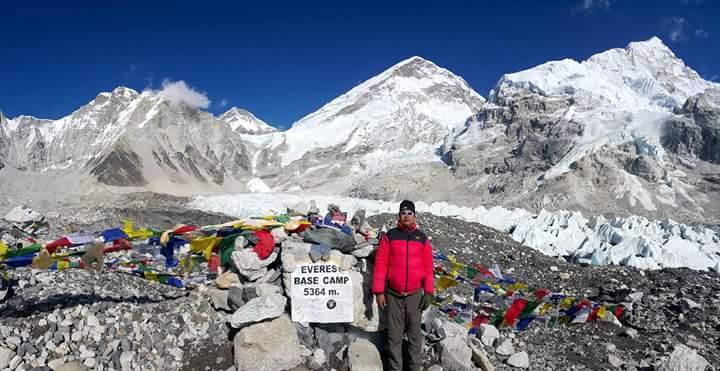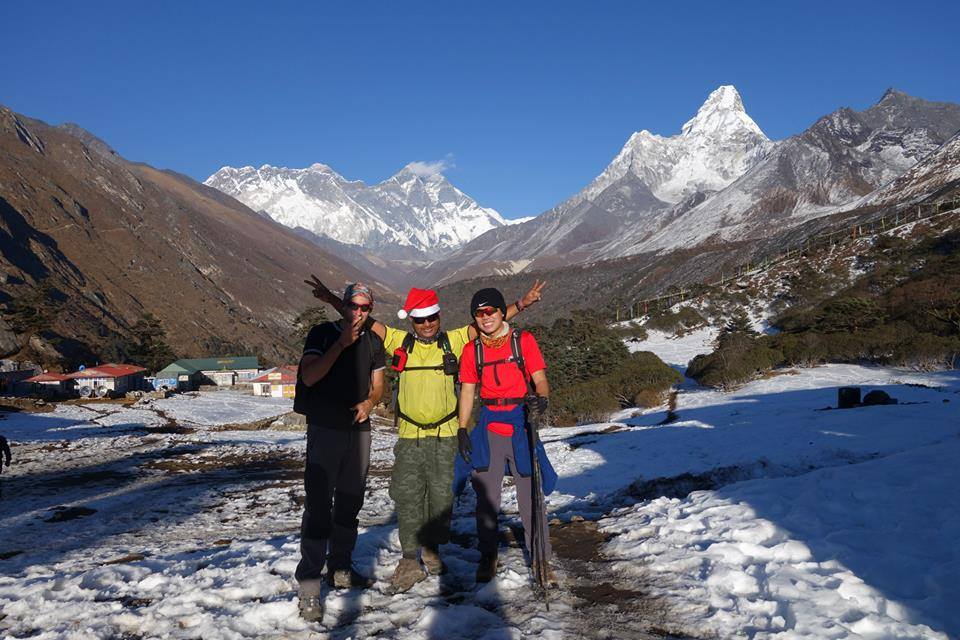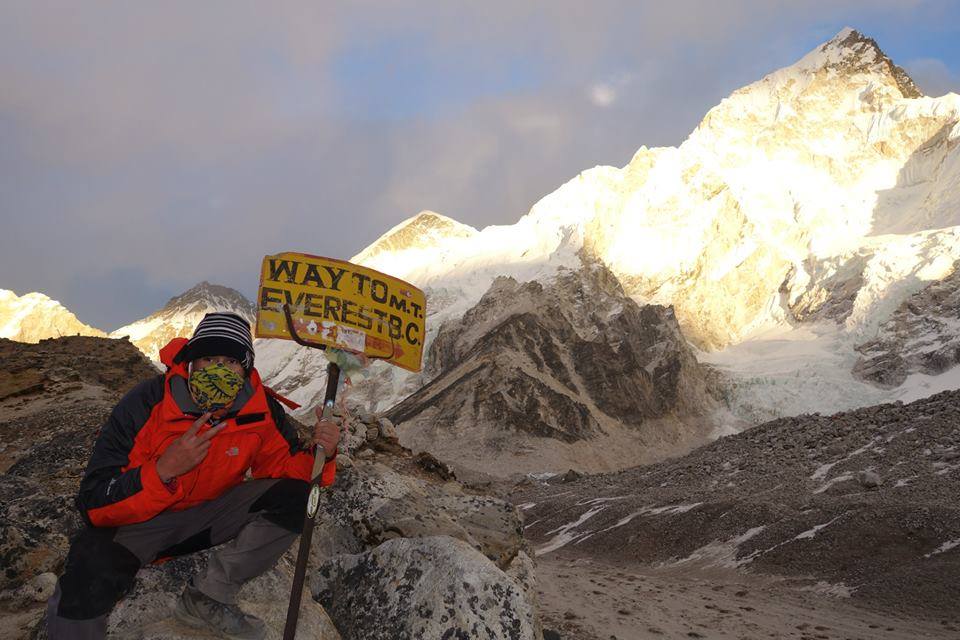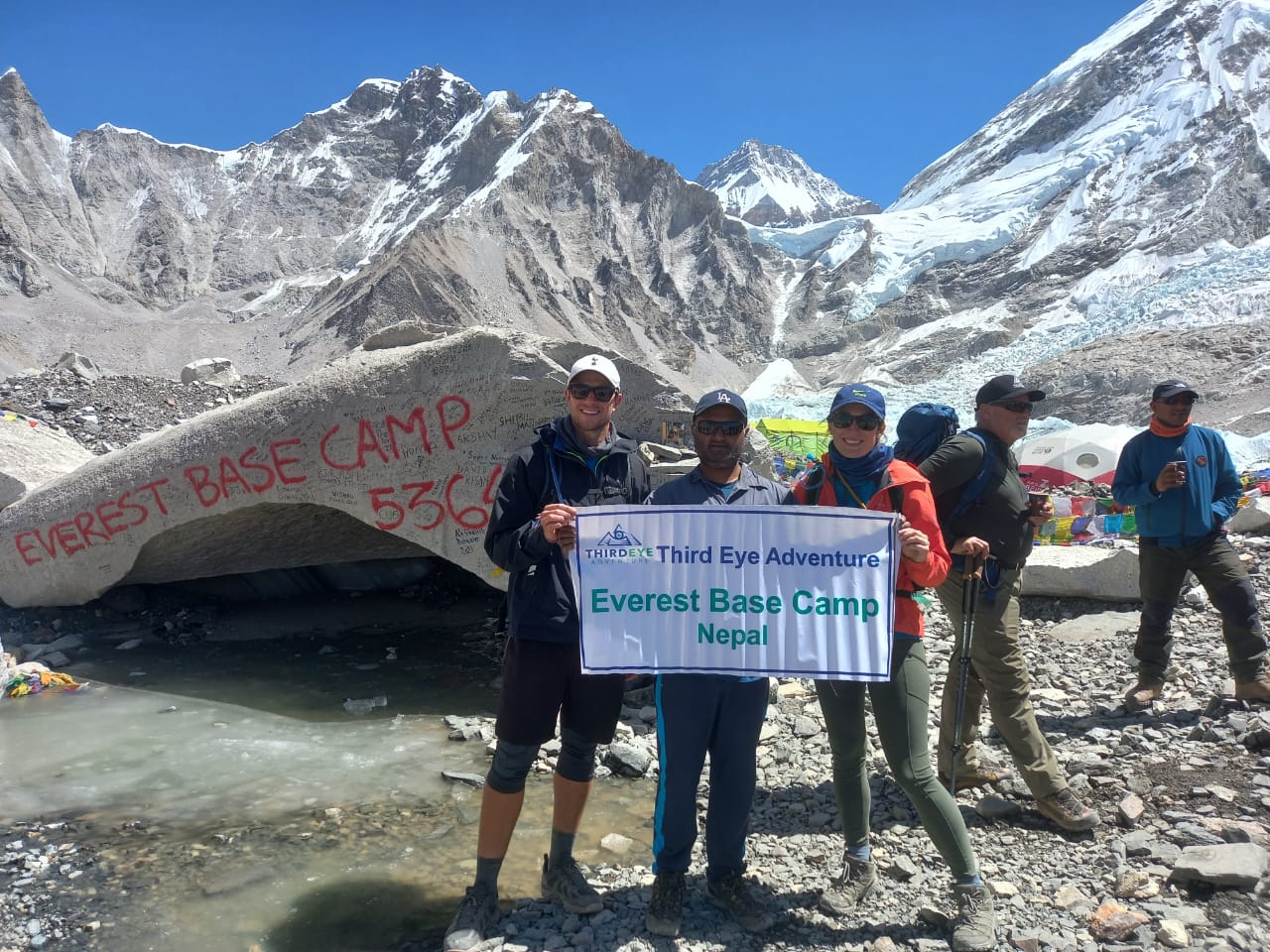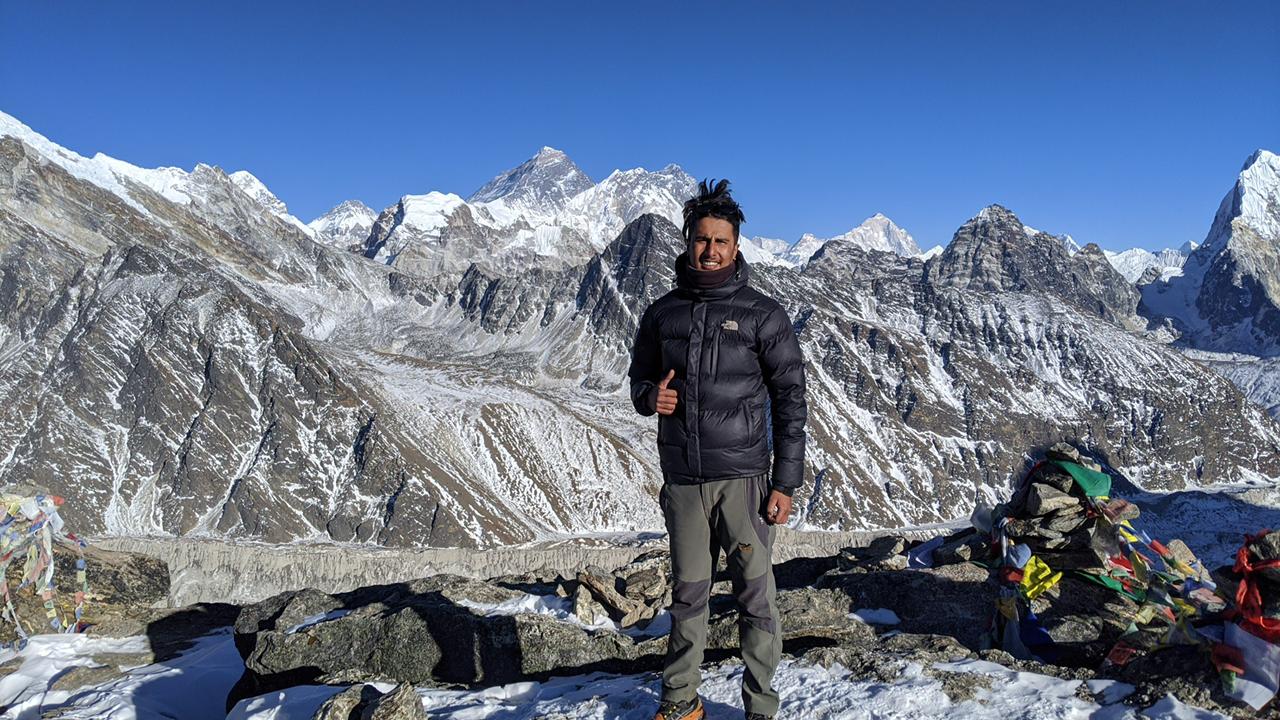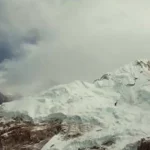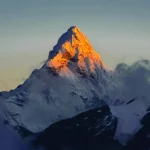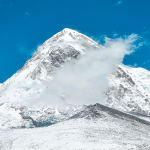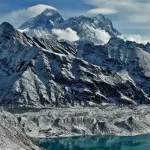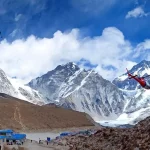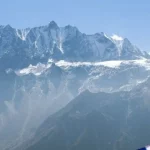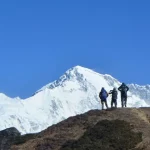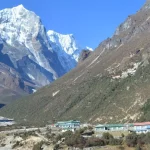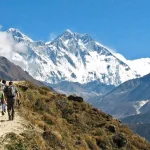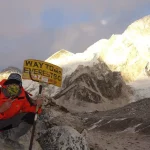Best Time For Luxury Trek To Everest Base Camp
Trekking at Everest Base Camp is an incredibly rewarding experience for all travelers. Still, the experience is even more unique and special when done during the best time of year. The best time of year to trek to Everest Base Camp is from March to May, during the spring season, and September to November, the autumn season. During this time, the climate is moderate, and temperatures are warmer, with clear skies and fair weather. This is one of Nepal’s peak travel times and the most recommended month for trekking.
The spring season is especially beautiful and rewarding for travelers, as the rhododendrons start to bloom in full display with their stunning pink and white blossoms. The spring months are also the climbing season for those attempting to summit the mountain, so you may even have the opportunity to spot experienced mountaineers at the base camp.
The autumn seasons are also a great time to trek to Everest Base Camp, as the days are shorter and temperatures cooler. The autumn months are known for their beautiful fall foliage, so the views of the mountains are even more spectacular.
Trekking in Winter and Monsoon season is not recommended for Everest Base Camp due to the harsh weather conditions. Winter brings extreme cold temperatures, making it difficult for trekkers to endure the freezing temperatures. Similarly, the Monsoon season brings heavy rainfall and creates slippery trails, posing additional challenges for trekkers. Therefore, it is advisable to plan your Everest Base Camp trek during other seasons when the weather is more conducive for trekking.
Spring Season (March, April, May)
The spring season, from March to May, is considered one of the best times to trek to Everest Base Camp. The weather during this period is usually stable, with moderate temperatures and clear skies. The rhododendron forests come alive with vibrant colors, creating a picturesque backdrop for trekkers. The trails are less crowded compared to the peak season (Autumn), allowing for a more peaceful and enjoyable experience. However, it is important to note that as spring progresses, the temperatures may rise, and occasional rainfall can be expected.
Season Highlights:
- Weather is mild, not so cold
- Days gradually become warmer
- Ideal trekking season
- Wear warm clothes for colder nights
- Warmer days with sunshine
- Average temperature: 17 °C during the daytime
- Maximum temperature: 25 °C
- Night temperatures can be as low as -15 °C
Temperature:
- March: Max 7°C, Min -12°C
- April: Warmer days, chilly nights
- May: Max 15°C, Min 0°C, pleasant and warmer
Monsoon Season (June, July, August)
The monsoon season, from June to August, brings heavy rainfall to the Everest region. Trekking during this time can be quite challenging due to slippery and muddy trails. The continuous rainfall also obstructs the picturesque views, limiting visibility. However, the silver lining is that the trails are significantly less crowded, and you can experience a serene and tranquil environment. If you plan to trek during the monsoon season, it is crucial to be well-prepared with proper gear, waterproof clothing, and sturdy footwear.
Season Highlights:
- Breathtaking views of the Himalayan mountains
- Lush green landscapes and vibrant flora
- Refreshing rain showers and cool weather
- River crossings and waterfalls along the trails
- Challenging yet thrilling trekking routes
- Not advised for new trekkers
Temperature:
- June: Max 16°C, Min -1°C, fluctuating weather, heavy rain
- July: Hotter days, lower elevation hotter, wet and muddy paths, frequent rain
- August: Warmest month, cooler than lower places, unfavorable for trekking
Autumn Season (September, October, November)
Autumn, from September to November, is widely regarded as the best season to trek to Everest Base Camp. The weather during this period is generally stable, with clear skies and mild temperatures. The breathtaking mountain vistas are at their best, offering panoramic views of the surrounding peaks. The trails are bustling with fellow trekkers from around the world, creating a vibrant and lively atmosphere. However, it is important to book accommodations and permits well in advance, as this is the peak season for Everest Base Camp trekking.
Season Highlights:
- Breathtaking views of colorful autumn foliage
- Clear skies and excellent visibility for panoramic mountain views
- Moderate temperatures for comfortable trekking
- Festive atmosphere with local celebrations and cultural events
- Opportunities to witness unique wildlife and bird species
Temperature:
- September: Warm days (15°C), chilly nights (2°C), lower elevations warmer
- October: Favorable temperatures, good for trekking, colder nights at higher altitudes (12°C day, -6°C night)
- November: Cooler temperatures
Winter Season (December, January, February)
The winter season, from December to February, brings cold temperatures and a significant amount of snowfall to the Everest region. Trekking during this time requires advanced mountaineering skills and experience due to challenging conditions. However, for seasoned trekkers seeking a unique and adventurous experience, winter can be a great time to explore Everest Base Camp. The trails are less crowded, offering solitude and tranquility. It is essential to be equipped with proper winter gear, including insulated clothing, crampons, and ice axes, to ensure safety and comfort.
Season Highlights:
- Winter is the coldest season for trekking
- Morning fog and high passes in the Everest region are closed from November to March
- Winter season is generally considered miserable for travelers
- Crowds are less during the winter season
- Higher altitudes have freezing temperatures and frequent snowfall
Temperature:
- December: -14°C, cold nights, early mornings around Everest base camp
- January: declining temperature, chilling, freezing, heavy snowfall
- February: temperature starts to become warmer
Choosing the best time to trek to Everest Base Camp depends on various factors, including weather conditions, trail conditions, and personal preferences. While each season has its advantages and challenges, the spring and autumn seasons are generally considered ideal for most trekkers. Whichever season you choose, make sure to plan your trek meticulously, prepare well, and embark on this unforgettable journey with a sense of adventure and respect for the mighty Himalayas.
Elevation, Map & Routes To Luxury Everest Base Camp
The trails to Everest Base Camp (EBC) are an incredibly steep and long journey, but the beauty of the Himalayas that you encounter along the way makes it worth every step. This trek is one of the most popular in the world, and over 40,000 people make the trek each year.
The trek starts at the world-famous Lukla Airport, which is located at an elevation of 2,846 m (9,337 ft) and serves as the gateway to Everest Base Camp. From there, trekkers follow the Dudh Kosi River up to the Sherpa capital of Namche Bazaar at 3,440 m (11,290 ft). This is the main hub of the area and usually the place where climbers rest and acclimatize for the next part of the journey.
From Namche Bazaar trekkers continue on to the villages of Thyangboche, Pangboche and Dingboche. All of these villages are filled with incredible sights of the Himalayas, as well as Buddhist monasteries, tea houses, and local Sherpa markets.
The trail then takes us to Dingboche, where we’ll acclimate, hike to Nagerjun and return. From Dingboche, we’ll be on our way to Lobuche. From there, we’ll start our ascent to the highest elevation of our journey, Everest Base Camp, at 5,545 m (18,188 ft). Along the way, we will pass several glacial moraines, prayer flags, and stunning views of the highest mountain range in the world.
From there, we’ll make our way to Gorakshep, the flat field below Kala Patthar, 5,545 m (18,192 ft), and Mt. Pumori. This is a great spot to take some amazing photographs and to pause and marvel at the sheer size of Mount Everest.
Finally, our journey comes to an end here. We’ll travel back to Lukla in two days and then fly back to Kathmandu. The entire journey is an epic adventure that offers an unparalleled chance to immerse oneself in the beauty of the Himalayas. Planning a trek to Everest Base Camp requires adequate preparation and familiarization with the route map and terrain. With the right planning and preparation, you can make it to the base camp of Mount Everest and enjoy the rewards of your hard work.
Itineraries, Foods, Lodges & Accommodations
Our carefully planned itinerary will ensure that you have the best possible experience while exploring the highest mountain on earth. From the starting point of Namche Bazaar to the heart of the mountain at the Everest Base Camp, you will be treated to an unforgettable journey of a lifetime. As you prepare for the journey, please take the time to carefully review our itinerary to ensure that you are fully prepared for the trek.
Our itinerary includes all the necessary items for a safe and comfortable journey. We will provide you with an experienced English-speaking trek leader (trekking guide), an assistant trek leader (4 trekkers: 1 assistant guide), and Sherpa porters to carry luggage (2 trekkers:1 porter). This includes their salary, insurance, equipment, flight, food, and lodging.
In addition, we will provide you with a down jacket, a four-season sleeping bag, a Himalayan Glacier duffel bag, a t-shirt, and a trekking map (a down jacket and sleeping bag are to be returned after trip completion). We will also take care of all the necessary permits, such as National park permits, TIMS, and all government and local taxes.
We have thought of everything to make your trip to Luxury Everest Base Camp a success. From the experienced guides to the exclusive medical kit, we have thought of everything to ensure you have a safe and comfortable journey.
We are more than happy to accommodate any necessary changes to your itinerary according to your needs. Whether you want to extend your stay in Kathmandu or need to make any other changes to your itinerary, we are here to help.
We want you to have the best experience possible while traveling to Nepal. That’s why we are here to provide you with the most comprehensive itineraries and help you make any changes you need.
Regarding food, there is no shortage of options during the Everest Base Camp Luxury Lodge Trek. From typical Nepali dishes to a variety of international cuisine, the range of food available is incredible. Whether you want to try Tibetan, Continental, Italian, or Indian, there is something to satisfy every taste. From pizza and chips to apple pie, there is no shortage of delicious options to choose from.
One of the most popular dishes among trekkers is the traditional Nepali Dal Bhaat. This dish is a staple in Nepalese culture in carbohydrates, providing you with the energy you need for the trek. You will also find plenty of Tibetan dishes like thukpa and laphing.
Along with all the different types of cuisine available, the lodges and tea houses you’ll find in the Everest region are also known for their high level of service. Through Everest Summit Lodge (ESL) and Yeti Mountain Home (YMH), you’ll find accommodations that are comfortable and clean. These lodges have attractive gardens, comfortable lounges, and bedrooms with hot showers, western toilets, and electricity.
Overall, the food and accommodations during the Everest Base Camp Luxury Lodge Trek are some of the best you’ll find in the world. From traditional Nepali dishes to international cuisine, as well as comfortable lodges and tea houses, the experience of the Everest Base Camp Luxury Lodge Trek is truly one of a kind.
Worth Reading: Nepal Trekking Packing List
Permits Required for Luxury Everest Base Camp Trekking
Getting the necessary permits to visit the Everest Base Camp is crucial and highly regulated. Before you set off on your trek, you must make sure you have the required permits to enter the area.
There are two primary permits you will need to visit the Everest Base Camp:
- Sagarmatha National Park permit
- Khumbu Municipality Permit
Sagarmatha National Park permit
The first permit you will need is the Sagarmatha National Park permit. Sagarmatha National Park is a UNESCO World Heritage Site and is home to the majestic Everest region. The permit is essential as it allows you access to the park and helps fund the conservation efforts that preserve its unique environment. The park permit not only grants you entry to the trekking area but also provides you with valuable information about the park’s regulations and guidelines, ensuring that you have a safe and enjoyable trekking experience.
Cost:
- Foreign nationals: NPR 3,000 (USD 30) per person per entry + 13% VAT
- SAARC nationals: NPR 1,500 (USD 15) per person per entry + 13% VAT
- Nepali nationals: NPR 100 (USD 10) per person per entry + 13% VAT
Khumbu Municipality Permit
The second permit required for the luxury Everest Base Camp trek is the Khumbu Municipality Permit. This permit is specifically meant for the Khumbu region, which includes popular trekking destinations like Namche Bazaar, Dingboche, and Tengboche. The Khumbu Municipality Permit is necessary to ensure that the local communities benefit from tourism and to maintain the sustainability of the area. By obtaining this permit, you contribute to the development of the region and help support the local economy.
Cost:
- For foreign nationals, the permit fee is NPR 2,000 (USD 20) per person for the first four weeks. Beyond four weeks, the fee is NPR 2,500 (USD 25) per person. Please note that VAT is not applicable.
Where to get the permits?
Getting these permits is a straightforward process, but it’s important to note that they are strictly enforced. To obtain the Sagarmatha National Park permit, you can visit the Nepal Tourism Board in Kathmandu or the Sagarmatha National Park entrance gate in Monjo. The Khumbu Municipality Permit can be obtained from the municipality office in Khumbu Pasanglhamu Rural Municipality in Lukla or the checkpoint in Monjo. It’s recommended to apply for these permits at least a day before starting your trek to avoid any last-minute delays.
While obtaining these permits is crucial, it’s equally important to ensure that you adhere to the rules and regulations set by the authorities. This includes following designated trekking routes, respecting the local culture and customs, and maintaining environmental sustainability by disposing of waste responsibly. By doing so, you not only contribute to the preservation of the Everest region but also enhance the overall trekking experience for yourself and future travelers.
Note: If you choose to book with us, Third Eye Adventure, we will handle all of your permits and necessary paperwork, ensuring a hassle-free experience for you. Our comprehensive itinerary includes all the details of your adventure, and we will take care of obtaining the required permits and handling the paperwork on your behalf. With us, you can focus on enjoying your journey while we handle the administrative tasks.


